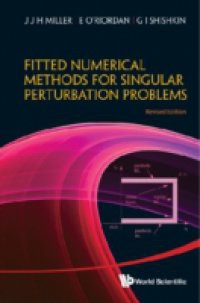Since the first edition of this book, the literature on fitted mesh methods for singularly perturbed problems has expanded significantly. Over the intervening years, fitted meshes have been shown to be effective for an extensive set of singularly perturbed partial differential equations. In the revised version of this book, the reader will find an introduction to the basic theory associated with fitted numerical methods for singularly perturbed differential equations. Fitted mesh methods focus on the appropriate distribution of the mesh points for singularly perturbed problems. The global errors in the numerical approximations are measured in the pointwise maximum norm. The fitted mesh algorithm is particularly simple to implement in practice, but the theory of why these numerical methods work is far from simple. This book can be used as an introductory text to the theory underpinning fitted mesh methods.Contents:Motivation for the Study of Singular Perturbation ProblemsSimple Examples of Singular Perturbation ProblemsNumerical Methods for Singular Perturbation ProblemsSimple Fitted Operator Methods in One DimensionSimple Fitted Mesh Methods in One DimensionConvergence of Fitted Mesh Difference Methods for Linear Reaction-Diffusion Problems in One DimensionProperties of Upwind Finite Difference Operators on Piecewise Uniform Fitted MeshesConvergence of Fitted Mesh Finite Difference Methods for Linear Convection-Diffusion Problems in One DimensionFitted Mesh Finite Element Methods for Linear Convection-Diffusion Problems in One DimensionConvergence of Schwarz Iterative Methods for Fitted Mesh Methods in One DimensionLinear Convection-Diffusion Problems in Two Dimensions and Their Numerical SolutionBounds on the Derivatives of Solutions of Linear Convection-Diffusion Problems in Two Dimensions with Regular Boundary LayersConvergence of Fitted Mesh Finite Difference Methods for Linear Convection-Diffusion Problems in Two Dimensions with Regular Boundary LayersLimitations of Fitted Operators Methods on Uniform Rectangular Meshes for Problems with Parabolic Boundary LayersFitted Numerical Methods for Problems with Initial and Parabolic Boundary LayersReadership: Scientists and engineers in applied mathematics and mathematical physics.















